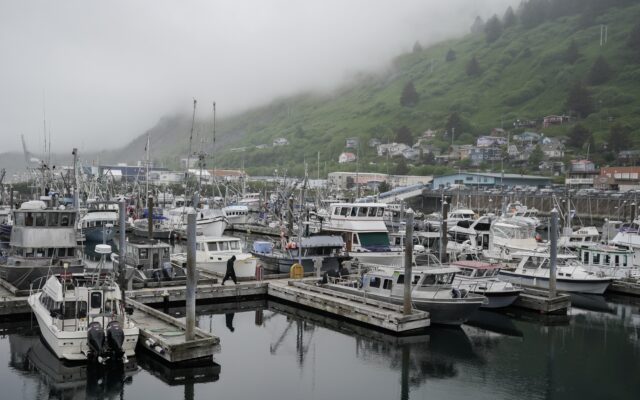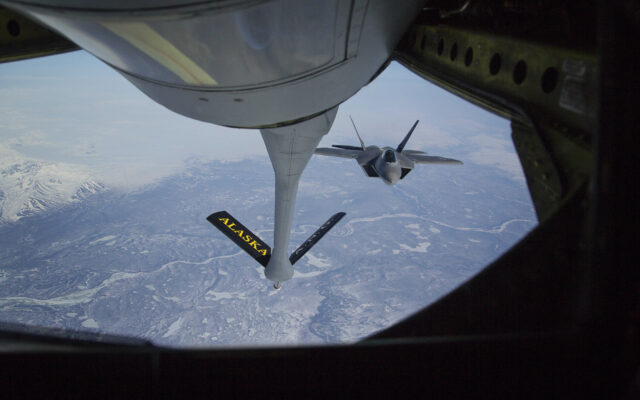Alaska fishermen will be allowed to harvest lucrative red king crab in the Bering Sea

ANCHORAGE, Alaska (AP) — Alaska fishermen will be able to harvest red king crab for the first time in two years, offering a slight reprieve to the beleaguered fishery beset by low numbers likely exacerbated by climate change.
There was no such rebound for snow crab, however, and that fishery will remain closed for a second straight year, the Alaska Department of Fish and Game announced Friday.
“The Bristol Bay red king crab fishery for the prior two seasons were closed based on low abundance and particularly low abundance of mature-sized female crabs,” said Mark Stichert, the state department’s ground fish and shellfish management coordinator,
“Based on survey results from this year, those numbers have improved, some signs of modest optimism in terms of improving abundance in Bristol Bay red king crab overall and that has allowed for a small but still conservative fishery for 2023 as the total population size is still quite low,” he said.
The reopening of the red king crab fishery was welcome news for fishers.
“We’re really happy they’re opening up the king crab season, it’ll bring some much needed relief,” said Gabriel Prout, a third-generation fisher and president of the Alaska Bering Sea Crabbers, a nonprofit trade association.
But Prout expects fewer boats to participate in this season’s crab fishery. Difficulty in finding crew members and having enough money to maintain boats may limit the number of vessels participating this season, he added.
The estimates of spawning crab and the number of mature female red king crab were above thresholds required to open the fishery in Bristol Bay, according to analysis of surveys by both the state and the National Marine Fisheries Service.
Fishermen will be allowed to catch 2.1 million pounds (952,500 kilograms) of red king crab for three months beginning Oct. 15, the state announced.
More than 2.65 million pounds (1.2 million kilograms) were caught in 2020. The fishery saw nearly 130 million pounds (59 million kilograms) caught in 1980 before declining for the next three decades.
While the red king crab have been off limits for two years, the snow crab season was also canceled last year.
State fishery officials also decided to close the snow crab season for a second year, siding on conservation of the stock.
The Tanner crab fishery will open as normal after the number of adult mature male Tanner crabs exceeded the threshold, one species that has signs of optimism in the coming years for fisheries managers.
The total allowable catch for Tanner crab in the western Bering Sea was set at 1.3 million pounds (589,700 kilograms), while the eastern Bering Sea fishery was capped at 760,000 pounds (344,700 kilograms). The fishery also opens Oct. 15 and runs through March 31.
The decisions come after a first-ever closure for the snow crab fishery last year and a second-straight year of closure for the red king crab fishery in the Bering Sea after an annual survey in 2021 found all-time lows in the crab populations. Scientists think that population decline was a result of two years of low sea ice cover and abnormally warm ocean temperatures due to climate change may have altered the ecosystem in a way that snow crab couldn’t survive.
In 2020, snow crab fishers caught about 45 million pounds (20.4 million kilograms) of snow crab worth almost $106 million, according to the Alaska Department of Fish and Game. The following season, that fishery shrank to about a tenth of the previous season – 5.5 million pounds (2.5 million kilograms) were harvested at a value of just over $24 million.
The closure of the snow crab fishery in 2022 squeezed commercial fishers in Kodiak, Alaska, with some losing much of their income. Earlier this year, the U.S. Department of Commerce allocated almost $192 million to assist fishers affected by the closures of the red king crab and snow crab fisheries in 2021 and 2022, but some fishers expressed doubt that they could stay in business until that money arrives.
You Might Also Like



